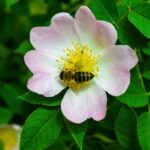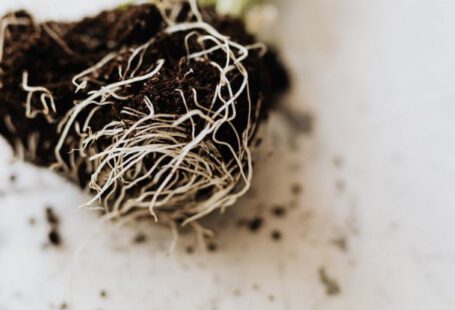Roses are renowned for their beauty and fragrance, making them a popular choice for many gardeners. To ensure your rose bushes produce optimal blooms, it’s essential to provide them with the proper care and attention they need. By following a few key tips and techniques, you can help your roses thrive and showcase their full potential in your garden.
Choosing the Right Location and Soil
Selecting the ideal location for your rose bushes is crucial to their overall health and blooming success. Roses thrive in full sun, so be sure to plant them in an area that receives at least six hours of sunlight per day. Additionally, ensure that the soil is well-draining to prevent waterlogging, which can lead to root rot.
When it comes to soil type, roses prefer rich, loamy soil with a slightly acidic pH level. To improve the soil quality, consider adding organic matter such as compost or well-rotted manure to provide essential nutrients and promote healthy root growth. Regularly test the soil pH to ensure it remains within the optimal range for rose cultivation.
Watering and Mulching Techniques
Proper watering is essential for the health and vitality of your rose bushes. During the growing season, roses require consistent moisture to support their growth and blooming cycle. Water deeply at the base of the plant to encourage the roots to grow downward in search of water, promoting a strong and resilient root system.
To help retain soil moisture and suppress weed growth, consider applying a layer of organic mulch around the base of your rose bushes. Mulch also helps regulate soil temperature, keeping the roots cool in hot weather and insulating them during colder months. Avoid piling mulch directly against the stems of the roses to prevent rot and disease.
Pruning and Deadheading for Optimal Blooms
Regular pruning is essential for maintaining the health and shape of your rose bushes while promoting optimal blooming. Prune your roses in late winter or early spring before new growth emerges to remove dead or diseased branches, as well as any crossing or overcrowded stems. This helps improve air circulation around the plant, reducing the risk of fungal diseases.
Deadheading, or the removal of spent blooms, is another important practice to encourage continuous blooming throughout the season. By deadheading faded flowers, you redirect the plant’s energy into producing new blooms rather than seed production. Use clean, sharp pruning shears to make clean cuts just above a set of healthy leaves or an outward-facing bud.
Fertilizing and Feeding Your Roses
Proper fertilization is key to supporting the growth and blooming potential of your rose bushes. Start by feeding your roses with a balanced fertilizer in early spring as new growth begins. Repeat applications every 4-6 weeks during the growing season to provide a steady supply of nutrients.
In addition to traditional fertilizers, consider using organic alternatives such as compost or fish emulsion to nourish your roses naturally. These organic options help improve soil structure and fertility over time, promoting long-term health and vitality in your rose garden.
Pest and Disease Management
Keeping an eye out for common pests and diseases is essential for maintaining the health and beauty of your rose bushes. Aphids, spider mites, and Japanese beetles are among the most common pests that can damage rose plants. Regularly inspect your roses for any signs of infestation, such as distorted leaves or sticky residue, and take prompt action to address the issue.
Additionally, fungal diseases like powdery mildew and black spot can affect the foliage of your roses if left unchecked. To prevent these diseases, avoid overhead watering, which can promote moisture retention on the leaves. Consider applying a fungicidal spray preventatively, especially during periods of high humidity or frequent rainfall.
Enhancing Blooms with Care and Attention
By providing your rose bushes with the proper care and attention they need, you can ensure they reach their full blooming potential and enhance the beauty of your garden. From selecting the right location and soil to practicing proper watering, pruning, and fertilizing techniques, each step plays a vital role in promoting optimal blooms in your roses. With a little dedication and effort, you can enjoy a stunning display of colorful and fragrant roses throughout the growing season.
Maintaining Your Rose Garden for Lasting Beauty
As the blooms of your rose bushes continue to dazzle and delight, it’s important to maintain your rose garden for lasting beauty and vitality. Regularly monitor your roses for any signs of stress, disease, or nutrient deficiencies, and take proactive measures to address any issues that may arise. By staying attentive and proactive in your care routine, you can ensure that your rose bushes thrive and continue to bring joy and beauty to your outdoor space for years to come.





